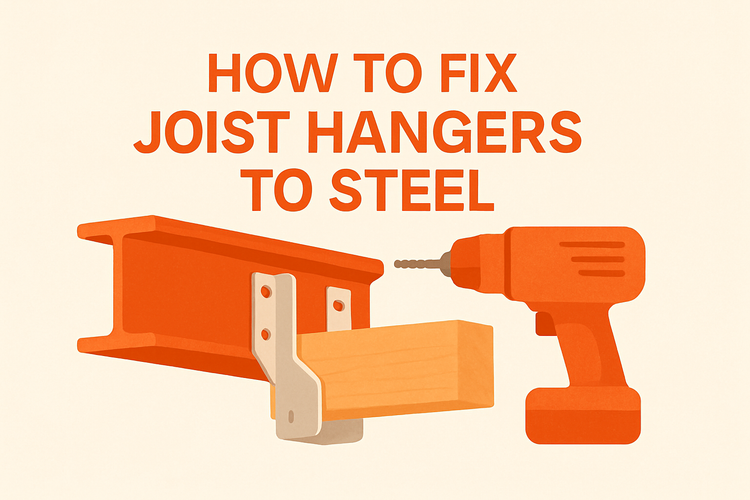How To Fix Joist Hangers To Steel

Choosing the Right Joist Hanger for Steel
Not all joist hangers are made for use with steel. Selecting the right type is crucial for structural integrity.
When attaching timber to steel structures, it's essential to choose joist hangers specifically rated for steel-to-timber connections. These hangers are designed with stronger materials and coatings to accommodate the hardness and vibrations experienced in steel frameworks. Always check product descriptions and manufacturer guidance before selecting your hardware.
Opt for joist hangers that offer bolt holes or welding options compatible with steel beams. Galvanised or stainless steel hangers are preferable due to their resistance to corrosion and the high stresses incurred in steel structures. For a reliable range, explore our line of Joist Hangers designed for different connection needs.
Preparing the Steel Surface
The steel surface must be clean and properly prepared before attaching any hanger. This ensures maximum connection strength and longevity.
Begin by removing rust, dirt, paint, or oils from the area where the hanger will be fixed. A clean steel surface allows for better adhesion if using adhesive or accurate alignment for bolts and welds. Use a wire brush or grinder as needed, always wearing protective gear.
Mark the locations for each joist hanger with precision using a chalk line or permanent marker. Even slight misalignment can compromise the overall stability of the structure. Taking the time at this stage reduces the chance of mistakes when drilling or welding the hangers in place.
Fixing Joist Hangers with Bolts
Bolting joist hangers to steel is one of the most common and secure methods. It creates a strong mechanical connection between timber and the steel substrate.
Drilling into steel requires proper tools—make use of high-speed steel or cobalt drill bits and ensure your drill has sufficient power. Pilot holes help to guide the bolts and prevent cracking or warping in the hanger or timber. Bolts should be chosen for strength and compatibility, such as M10 or M12 sizes with structural washers to distribute load evenly.
Once bolted in place, insert the timber joists, ensuring a tight fit within the hanger. Secure with appropriate fixings like screws and nails rated for structural loads. It's also important to double-check alignment as you work to maintain consistent spacing and level for the framework.
Using Self-Tapping Screws and Rivets
In scenarios where bolts are not feasible, self-tapping screws or rivets can provide a quick and efficient solution for lighter loads.
Self-tapping screws are useful for medium-duty connections and can eliminate the need for pre-drilling in thinner steel. However, for thicker beams, pre-drilling a pilot hole is still advisable. Select screws made from hardened steel with corrosion-resistant coatings. Installation should involve torquing with a drill and checking that the screw is not over-tightened to prevent stripping.
Rivets, particularly structural rivets, provide a permanent fastening solution that's tamper-resistant and easy to apply in confined spaces. These are typically used in combination with flange-style joist hangers and are effective in projects with pre-drilled holes in the frame. Keep in mind, riveted connections are harder to adjust after installation, so precise measurements beforehand are critical.
Welding Joist Hangers to Steel Beams
Welding offers the most permanent and robust connection between joist hangers and steel. However, it’s a method that requires professional skill and equipment.
Welding joist hangers directly to steel I-beams or box sections ensures zero movement and maximum strength. Only weld hangers that are specifically designed for welding—check the manufacturer's guidance to avoid compromising the material integrity. Typically, hangers suitable for welding will come without a galvanised coating in the contact areas, which could emit hazardous fumes when heated.
Ensure the entire beam surface around the welding zone is clean and properly grounded. A MIG or TIG welder, depending on beam thickness, should be used for precision and strength. It’s also good practice to consult an engineer if loads are substantial or if the structural integrity is critical to safety. For alternative load distribution, explore our Post Base products that can complement steel-to-timber joint support.
